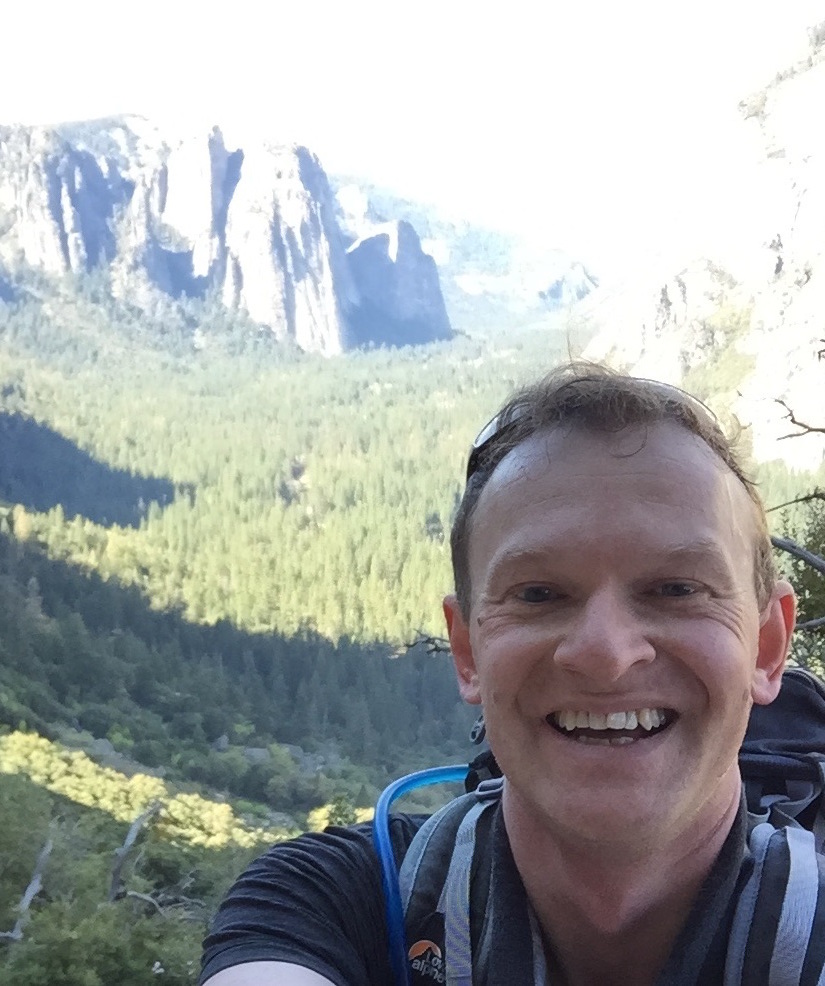
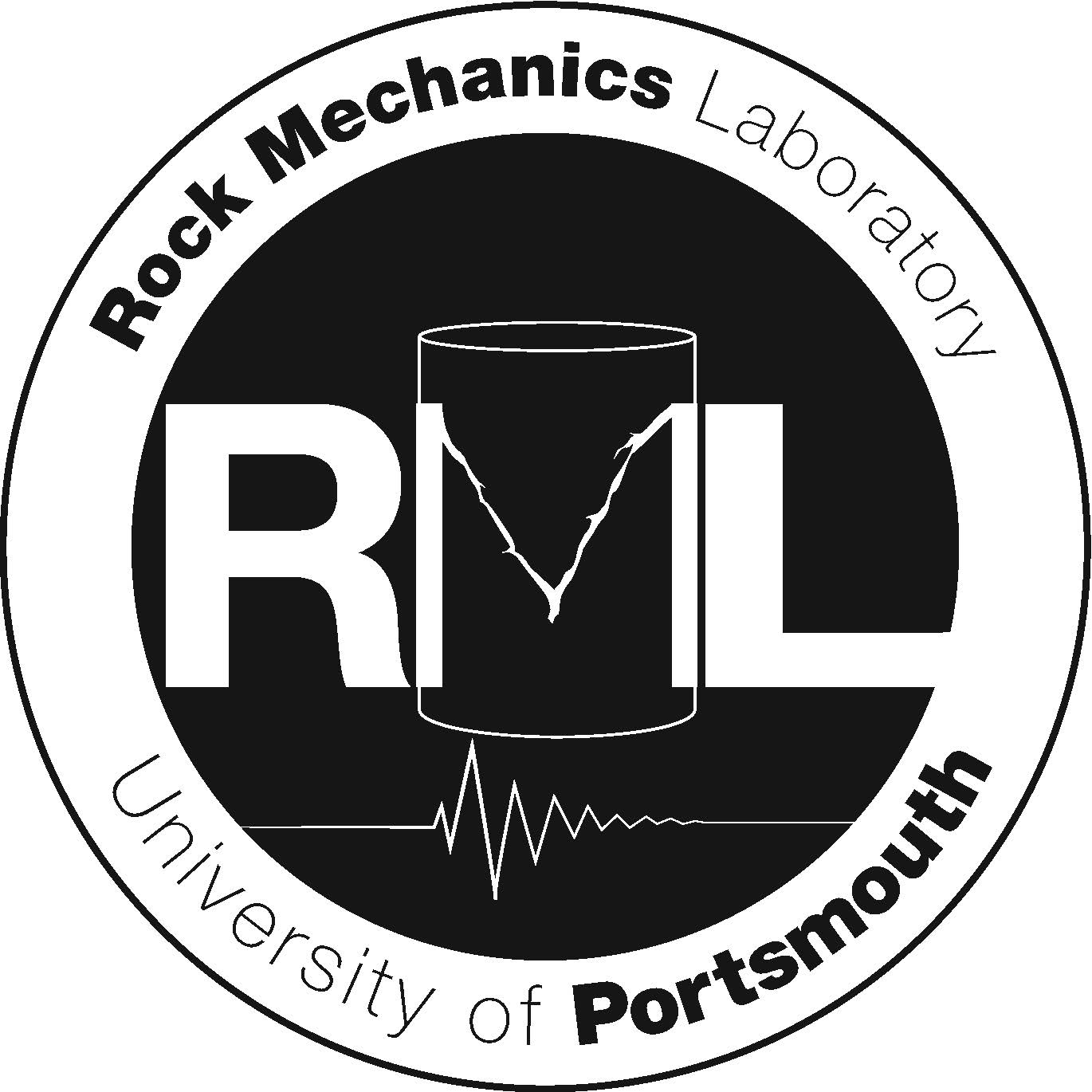

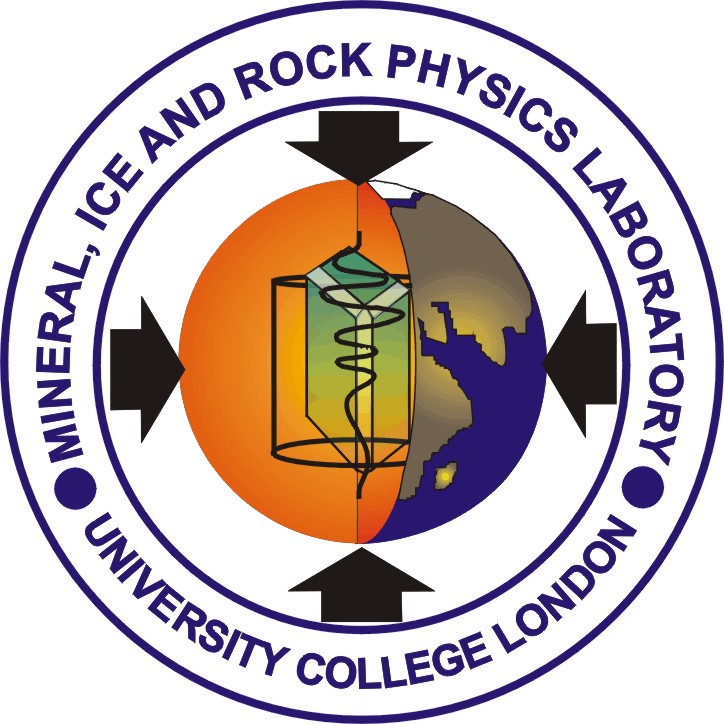
Philip M Benson
Reader in Rock Physics
Rock Mechanics Laboratory (RML),
School of the Environment, Geography and Geosciences,
University of Portsmouth
&
Honorary research fellow, Rock & Ice Physics Laboratory (RIPL),
Department of Earth Sciences,
University College London
Contact: p.benson@ucl.ac.uk or philip.benson@port.ac.uk
Index
Research overview
Current projects and collaborations
Publications
Summary CV: posts held and professional activities and Link to my full research profile on ORCID
Link to the Rock and Ice Physics Laboratory (RIPL) pages for details of the UCL rock physics laboratory facilities.
Link to BritRock (RML group) webpage for an overview of the equipment and facilities of the UofP rock mechanics laboratory research group.
Research
I am currently Reader in Rock Physics in the School of Earth and Environmental Sciences at the University of Portsmouth (UK), and honorary research fellow at UCL Earth Sciences. My research spans three interlinked themes, underpinned with a common applied geophysics thread that aims to better understand the solid Earth through a holistic laboratory experiments and simulations:
Rock Physics: This discipline describes the combination of controlled laboratory rock deformation experiments with measurements of geophysical and seismological properties. These experiments and methodologies allow fundamental studies of deep Earth processes to be made (which cannot be directly accessed) for comparison to routinely collected field data. Over the last 20 years I have applied these methods to, (i) develop a new understanding between fluid flow (permeability) anisotropy, elastic-wave anisotropy and 3D pore fabric anisotropy, (ii) better understand rock mass stability and fault friction, and (iii) understand how the 3D rock fabric influences seismic attenuation and other geophysical data.
Volcanotectonics and Geohazards: I extended the methods above, for the first time, to investigate fluid-driven seismicity in the shallow crust with particular focus on passive (triggered) seismicity in active volcanoes. These earthquakes in volcanic settings (known as Volcano-Tectonic, Hybrid and Low Frequency harmonic events) are diagnostic of conditions under the volcano and frequently detected before unrest. A new understanding of their generation in terms of fluid pressure, speed, and volume is now allowing new models to be developed for this important geological hazard, and better understand the key role that fluids have on the stability of volcanic flanks.
Geo-energy and CO2 sequestration and storage: Fluids are ubiquitous in the Earth, providing energy directly (e.g. hydrocarbons) or indirectly (e.g. Geothermal energy) as well as providing storage for waste products ranging from nuclear isotopes to CO2. Knowledge of how to manage the subsurface will therefore be key in our desire to move to Net Zero, and mitigate impact on health and wellbeing. Current research has successfully developed novel new apparatus to safely simulate these processes at elevated pressure and temperature, and using differnent fluid, to safely test links between deep reservoir dynamics and squestration/storage potential.
Current Projects and Collaborations
For more news see my: RML ResearchGate profile and the RML Twitter feed
More details of the projects below may be found on my ResearchGate laboratory pages here: Rock Mechanics Laboratory project pages
|
|
[NERC NE/X000133/1] Forecasting Eruptions at Volcanoes after Extended Repose (FEVER) (with UCL and INGV)
The overarching goals of project FEVER are to understand how volcanoes reawaken after generations at rest and to devise more reliable methods for forecasting eruptions. It is a longstanding collaboration between my Rock Mechanics Laboratory group, and the UCL Hazard research centre (Prof. Chris Kilburn), focussing on large caldera systems in in particular Campi Flegrei (Naples, Italy). As part of this 50/50 collaboration, innovative tensile fracture tests will be conducted at elevated temperature (to 400C) and pressure (to 4km depth) to simulate intermediate geothermal systems. These data will feed into new forecasting models developed at the hazard research centre. The project (starting March 2023) seeks to develop improved methods to mitigate eruption-based hazards and the associated health risks.
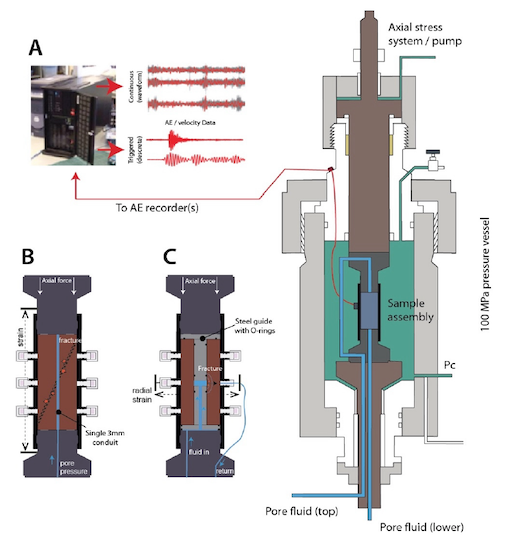

|
|
|
[RWM602] Fracturing of mudstone interbeds due to halite creep, and implications for the performance of a geological disposal facility for radioactive waste.
This new 4-year PhD research project will investigate the thermo-physical stability of rock masses for Geological Disposal Facility design. In particular it will design a long-term stability models using a suite of short-term laboratory tests to better understand the long-term risk profile for a deep disposal facility housed in rock featuring layers of halite (salt). This project is a collaboration with the British Geological Survey, with input from our commercial collaborators Ramboll (UK).
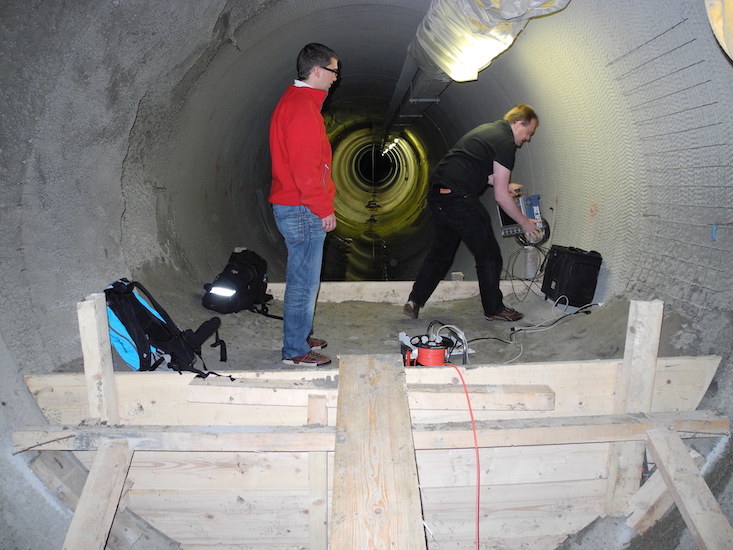
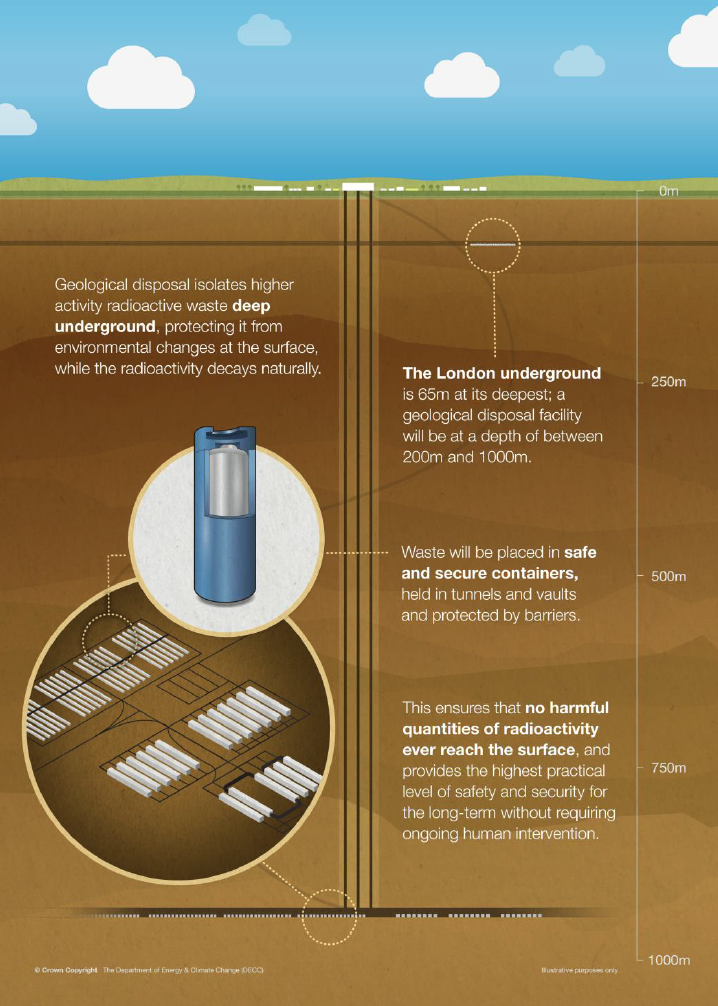
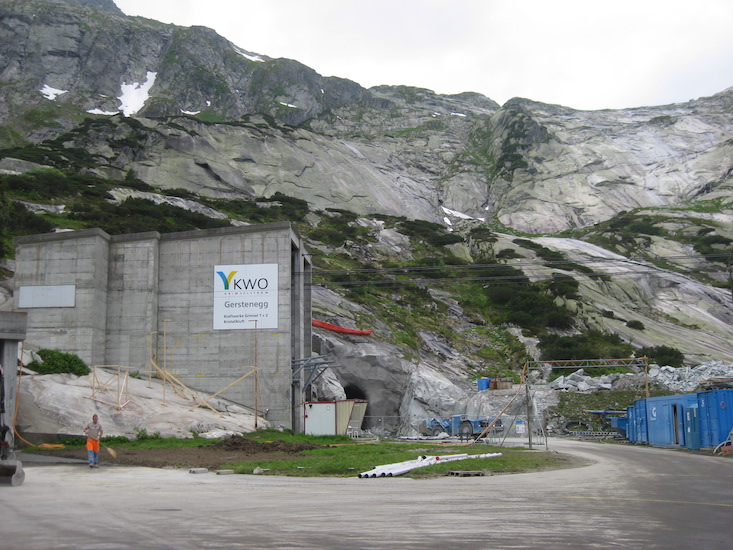
|
|
|
[UKRI NE/V013106/1] Proof-of-concept Enzyme-Enhanced Carbon Capture and Storage in Basalts (CO2RE collaboration).
This project aims to pilot and demonstrate new enzyme boosting methods for CO2 sequestration as part of a funding call led and managed by the CO2RE consortium, in partnership with the Centre for Enzyme Innovation at the university of Portsmouth. The research builds on the recently demonstrated Carbfix project which sequesters CO2 by injecting fluid into natural (hot) basalt rocks found at depth in Iceland. Our project is conducting new pilot laboratory studies using cool basalt rocks (common in the UK) by using enzymes (carbonic anhydrase) to boost the process.

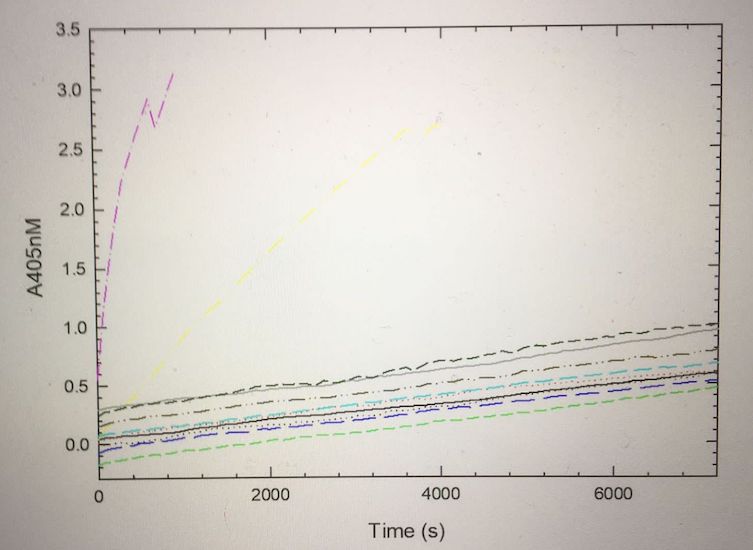
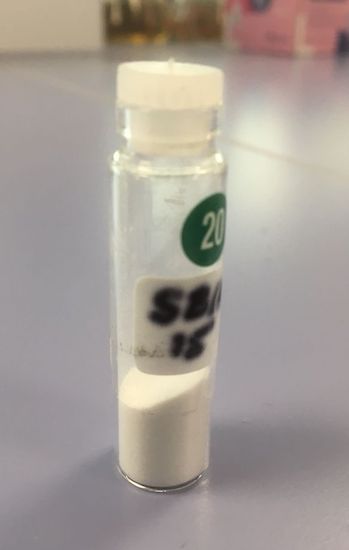
|
|
|
[NERC NE/W00383X/1] Geological optimisation in mining operations: understanding heterogenetity and anisotropy (with PUC).
This NERC seedcorn project is developing a new understanding of instability and risk in rock masses during mining applications. It is a collaboration with Pontificia Universidad Catolica de Chile (Santiago), who add their expertise in mining engineering and modelling to our expertise in laboratory rock testing. The project aims to develop new risk and safety profiles for small (artesian) mines, which are particularly prone to instability due to rock anisotropy (directional strength) effects.
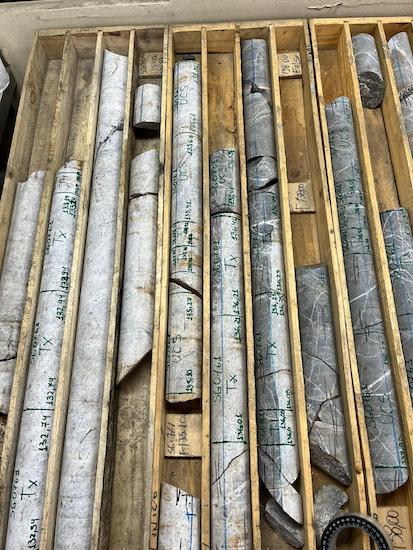
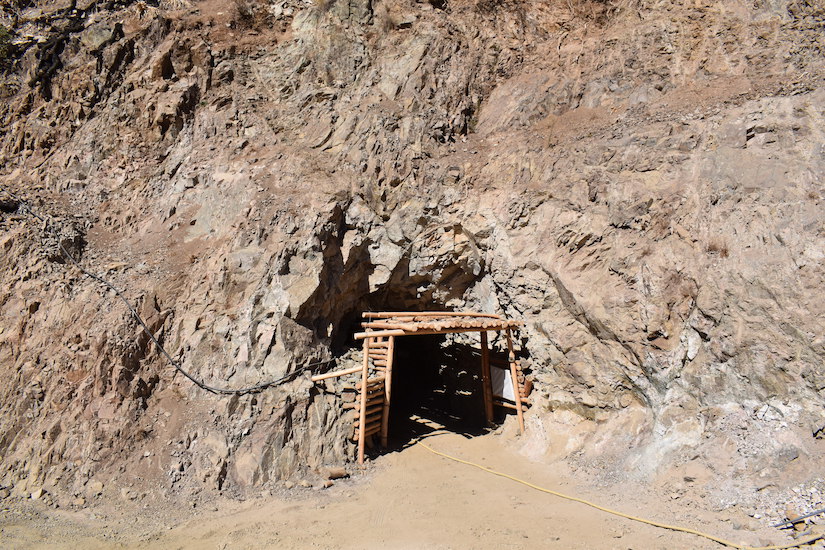
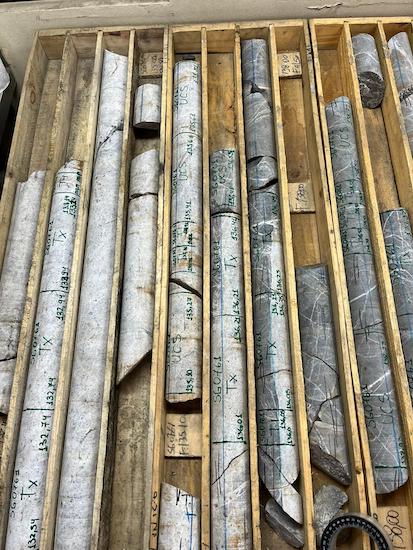
|
|
|
Flank collapse controls on Stromboli volcano: new insights from combined rock physics and remote sensing (with Universities of Mainz and Turin).
This ongoing collaboration aims to simulate high pressure and high temperature processes operating during dyke movement in volcanic settings. Knowledge of this process is key to better understanding the eruption of magma, and how the stability of the volcanic edifice (rock mass) is influenced during the movement and emplacement of dyke swarms. Examples of unstable rock masses include volcano flank collapse problems as seen at Etna, Stromboli and El Hierro. We use a variety of methods including laboratory rock deformation and rock physics, remote sensing, and numerical situations to better understand the interaction between the soft magma and underlying sediments (e.g. carbonates and limestones particularly in the case of Mt Etna), and the harder basalts and other volcano products.
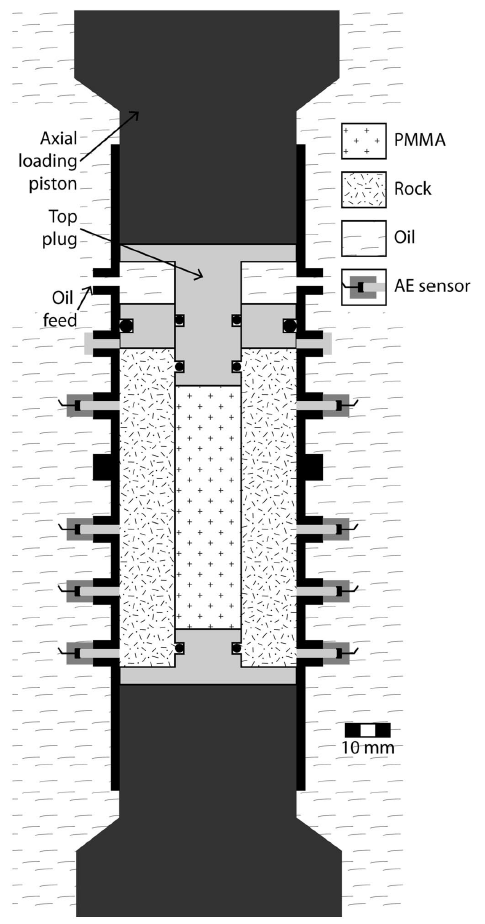
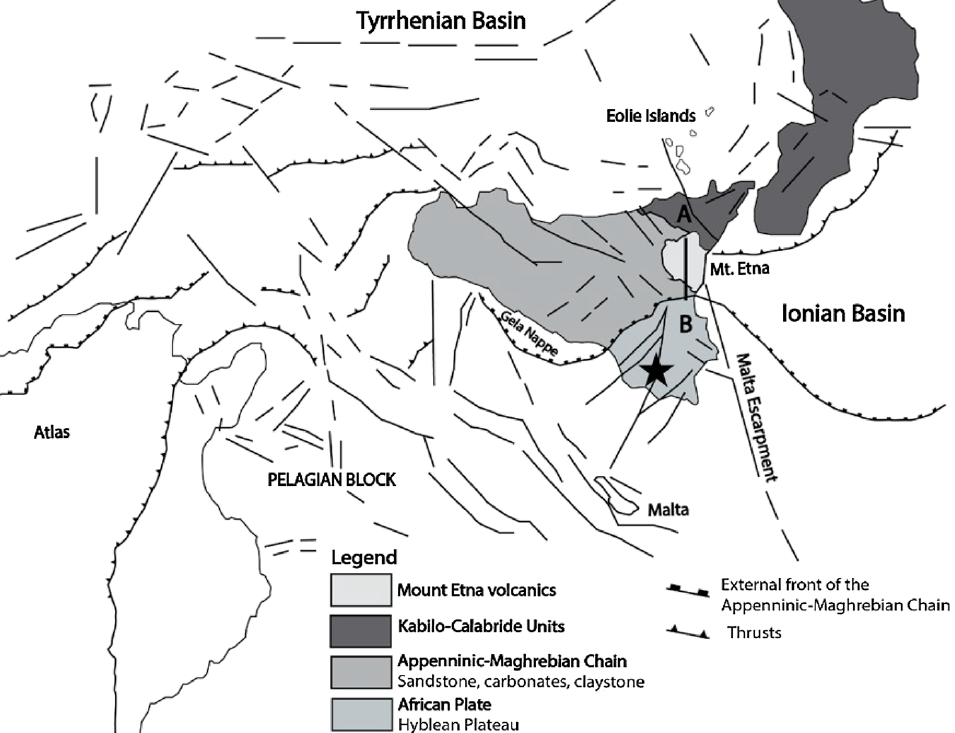
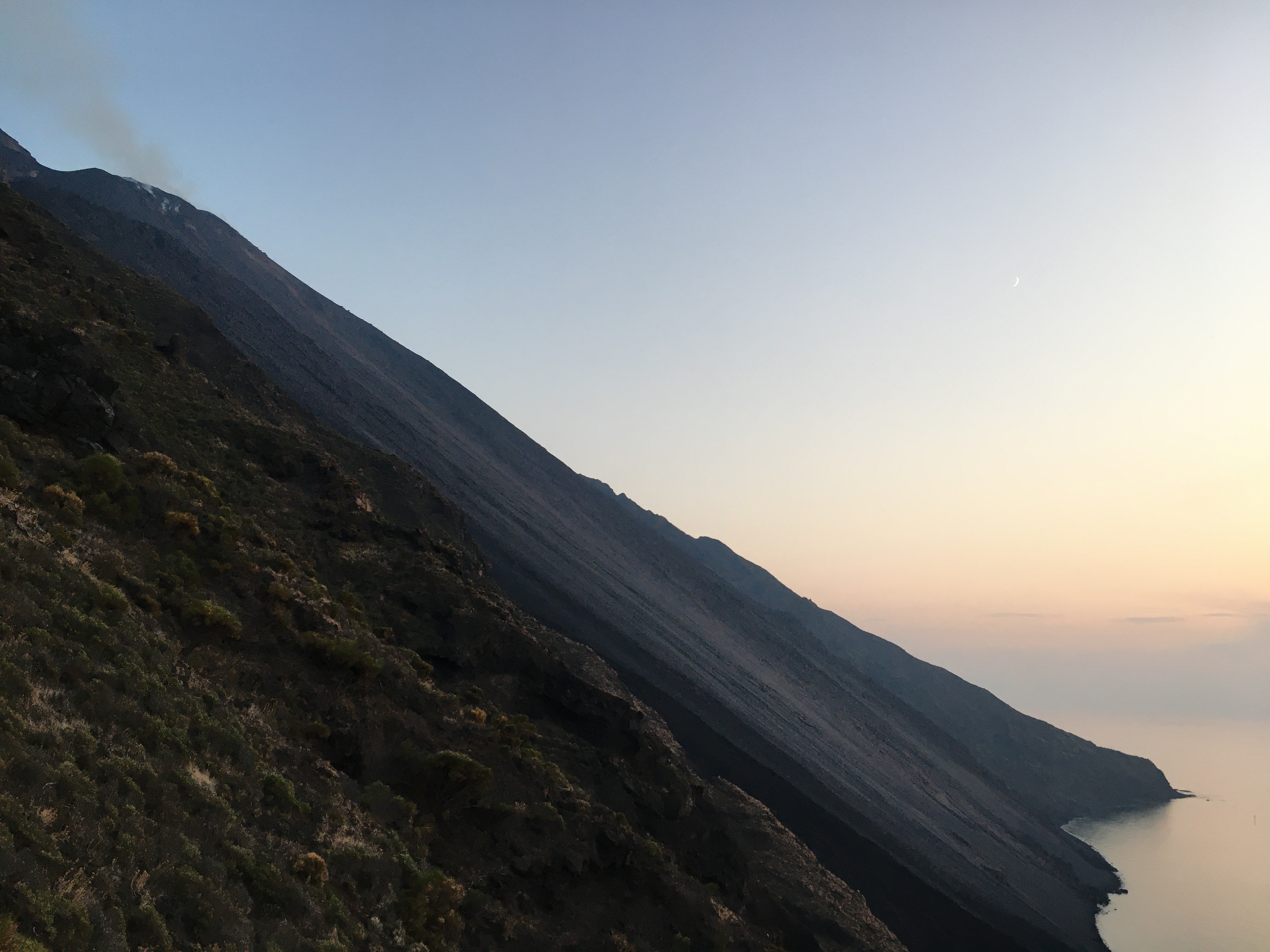
|
|
|
Multiscale techniques for imaging volcanic plumbing systems: from laboratory experiments to field scale (with Bristol, Mainz, Turin, DiaS and INGV).
Scaling in the Earth sciences represents a fundamental and ongoing challenge. Structures in volcanotectonics typically cover a large range of scales typically across the hundreds of meters to km scales. However, laboratory methods are at best in dm (fraction of metre scale) but have the key advantage that conditions (pressure, temperature, strain) may be imposed and controlled to develop new theories. Linking these scales requires numerical models, geophysical data, and scale invariant methods to bridge these key gaps. In this ongoing collaborative project between Portsmouth, INGV, Dias and the universities of Bristol, Mainz and Turin, a series of new experiments, methods, and numerical approaches are being combined to better understand the underpinning science of calling across different geophysical parameters. Ultimately, these new data may be applied to updated fracture forecasting models and eruption prediction tools in volcano geophysics. We particularly focus on the volcanoes of St. Helens and the "soft" rocks of Campi Flegrei caldera (Italy) to test these ideas.

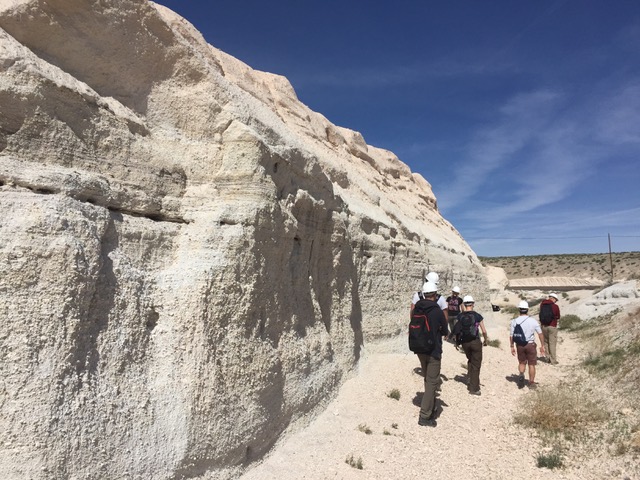
|
Back to top
Publications
[56] Del Pozo, F., E. Cordova, C. Marquardt, Rodolfo Cabezas, G., P.M. Benson, N. Koor, J. Browning, and R. Rudloff (2023), Development of a geomechanical model based on suitable estimations of GSI and UCS in mining production slopes at the TilTil district, central Chile. IJRM, 167, 105390. https://doi.org/10.1016/j.ijrmms.2023.105390.
[55] Alcock, T., D. Bullen, P.M. Benson, and S. Vinciguerra (2023), Temperature-driven micro-fracturing in Granite: the interplay between microstructure, mineralogy and tensile strength. Heliyon, 9, 3, e13871 https://doi.org/10.1016/j.heliyon.2023.e13871.
[54] King, T., L. De Siena, Y. Zhang, N. Nakata, P.M. Benson, and S. Vinciguerra (2023), Mapping Faults in the Laboratory with Seismic Scattering 2: The Modelling Perspective. Geophysical Journal International, 234, 2, 1024-1031 https://doi.org/10.1093/gji/ggad100.
[53] King, T., L. De Siena, P.M. Benson, and S. Vinciguerra (2022), Mapping Faults in the Laboratory with Seismic Scattering 1: The Laboratory Perspective. Geophysical Journal International, https://doi.org/10.1093/gji/ggac409.
[52] Ibemesi, P. and Benson, P.M. (2022), Effect of Pressure and Stress Cycles on Fluid Flow in Hydraulically Fractured, Low-Porosity, Anisotropic Sandstone. Rock Mech Rock Eng.
https://link.springer.com/article/10.1007/s00603-022-03043-y
[51] Rowley, P., Benson, P.M., and Bean, C.J. (2021), Deformation controlled Long-Period seismicity in low-cohesion volcanic sediments. Nature Geoscience 14, 942.
https://doi.org/10.1038/s41561-021-00844-8
[50] Fazio, M., Ibemesi, P., Benson, P.M., Bedoya-Gonzalez, D., and Sauter, M. (2021). The role of rock matrix permeability in controlling hydraulic fracturing in sandstones. Rock Mechanics & Rock Engineering. https://doi.org/10.1007/s00603-021-02580-2
[49] King, T., Vinciguerra, S., Burgess, J., Benson, P.M., & De Siena, L. (2021). Source mechanisms of laboratory earthquakes during fault nucleation and formation. Journal of Geophysical Research: Solid Earth, 126, e2020JB021059. https://doi.org/10.1029/2020JB021059
[48] King, T., Benson, P.M., and De Siena, L., Vinciguerra, S. (2020). Acoustic emission waveform picking with time-delay neural networks during rock deformation laboratory experiments, Seismological Research Letters, 92 (2A), 923-932. https://doi.org/10.1785/0220200188
[47] Austria, D.C., and P.M. Benson (2020). Fracture, Fluid and Saturation Effects on the Seismic Attributes of Hydrothermally Altered Rocks from Southern Negros Geothermal Field, Philippines. J. Volcanology and Geothermal Res. 408, 107099. https://doi.org/10.1016/j.jvolgeores.2020.107099
[46] Gehne, S., Forbes Inskip, N. D., Benson, P. M., Meredith, P. G., & Koor, N. (2020). Fluid-Driven Tensile Fracture and Fracture Toughness in Nash Point Shale at Elevated Pressure. Journal of Geophysical Research: Solid Earth, 125(2), 1-11. https://doi.org/10.1029/2019jb018971
[45] Benson, P.M., Austria, D. C., Gehne, S., Butcher, E., Harnett, C. E., Fazio, M., & Tomas, R. (2020). Laboratory simulations of fluid-induced seismicity, hydraulic fracture, and fluid flow. Geomechanics for Energy and the Environment, 24, 100169.https://doi.org/10.1016/j.gete.2019.100169
[44] Gehne, S., Benson, P. M., Koor, N., Dobson, K. J., Enfield, M., & Barber, A. (2019). Seismo-Mechanical Response of Anisotropic Rocks Under Hydraulic Fracture Conditions: New Experimental Insights. Journal of Geophysical Research: Solid Earth, 124(9), 9562-9579. https://doi.org/10.1029/2019JB017342
[43] Gehne, S., & Benson, P. M. (2019). Permeability enhancement through hydraulic fracturing: laboratory measurements combining a 3D printed jacket and pore fluid over-pressure. Scientific Reports, 9(1). https://doi.org/10.1038/s41598-019-49093-1
[42] Butcher, E., Gibson, A., Benson, P.M, Koor, N.K, and, & Swift, G. (2019). Near infrared spectroscopic measurement of strain in rocks. Journal of Near Infrared Spectroscopy, 27(6), 430-438. https://doi.org/10.1177/0967033519872540
[41] Fazio, M., Alparone, S., Benson, P. M., Cannata, A., & Vinciguerra, S. (2019). Genesis and mechanisms controlling tornillo seismo-volcanic events in volcanic areas. Scientific Reports, 9(1). https://doi.org/10.1038/s41598-019-43842-y
[40] Bakker, R. R., Violay, M. E. S., Vinciguerra, S., Fazio, M., & Benson, P. M. (2019). Constitutive Laws for Etnean Basement and Edifice Lithologies. Journal of Geophysical Research: Solid Earth, 124(10), 10074-10088. https://doi.org/10.1029/2019JB017399
[39] Castagna, A., Ougier-Simonin, A., Benson, P. M., Browning, J., Walker, R. J., Fazio, M., & Vinciguerra, S. (2018). Thermal Damage and Pore Pressure Effects of the Brittle-Ductile Transition in Comiso Limestone. Journal of Geophysical Research: Solid Earth, 123(9), 7644-7660. https://doi.org/10.1029/2017JB015105
[38] Colombero, C., Comina, C., Vinciguerra, S., & Benson, P. M. (2018). Microseismicity of an Unstable Rock Mass: From Field Monitoring to Laboratory Testing. Journal of Geophysical Research: Solid Earth, 123(2), 1673-1693. https://doi.org/10.1002/2017JB014612
[37] King, T., Benson, P. M., De Siena, L., & Vinciguerra, S. (2017). Investigating the apparent seismic diffusivity of near-receiver geology at mount St. Helens Volcano, USA. Geosciences (Switzerland), 7(4). https://doi.org/10.3390/geosciences7040130
[36] Harnett, C. E., Benson, P. M., Rowley, P., & Fazio, M. (2018). Fracture and damage localization in volcanic edifice rocks from El Hierro, Stromboli and Tenerife. Scientific Reports, 8(1). https://doi.org/10.1038/s41598-018-20442-w
[35] Gehne, S., & Benson, P. M. (2017). Permeability and permeability anisotropy in Crab Orchard sandstone: Experimental insights into spatio-temporal effects. Tectonophysics, 712-713, 589-599. https://doi.org/10.1016/j.tecto.2017.06.014
[34] Fazio, M., Benson, P. M., & Vinciguerra, S. (2017). On the generation mechanisms of fluid-driven seismic signals related to volcano-tectonics. Geophysical Research Letters, 44(2), 734-742. https://doi.org/10.1002/2016GL070919
[33] Ghaffari, H. O., Griffith, W. A., & Benson, P. M. (2017). Microscopic evolution of laboratory volcanic hybrid earthquakes. Scientific Reports, 7. https://doi.org/10.1038/srep40560
[32] Bakker, R. R., Fazio, M., Benson, P. M., Hess, K. U., & Dingwell, D. B. (2016). The propagation and seismicity of dyke injection, new experimental evidence. Geophysical Research Letters, 43(5), 1876-1883. https://doi.org/10.1002/2015GL066852
[31] Ghaffari, H. O., Griffth, W. A., Benson, P. M., Xia, K., & Young, R. P. (2016). Observation of the Kibble-Zurek Mechanism in Microscopic Acoustic Crackling Noises. Scientific Reports. https://doi.org/10.1038/srep21210
[30] Bakker, R. R., Violay, M. E. S., Benson, P. M., & Vinciguerra, S. C. (2015). Ductile flow in sub-volcanic carbonate basement as the main control for edifice stability: New experimental insights. Earth and Planetary Science Letters, 430, 533-541. https://doi.org/10.1016/j.epsl.2015.08.017
[29] Kushnir, A. R. L., Kennedy, L. A., Misra, S., Benson, P., & White, J. C. (2015). The mechanical and microstructural behaviour of calcite-dolomite composites: An experimental investigation. Journal of Structural Geology, 70, 200-216. https://doi.org/10.1016/j.jsg.2014.12.006
[28] Benson, P. M., Vinciguerra, S., Nasseri, M. H. B., & Young, R. P. (2014). Laboratory simulations of fluid/gas induced micro-earthquakes: Application to volcano seismology. Frontiers in Earth Science, 2(4). https://doi.org/10.3389/feart.2014.00032
[27] Vallianatos, F., Michas, G., Benson, P. M., & Sammonds, P. (2013). Natural time analysis of critical phenomena: The case of acoustic emissions in triaxially deformed Etna basalt. Physica A: Statistical Mechanics and Its Applications, 392(20), 5172-5178. https://doi.org/10.1016/j.physa.2013.06.051
[26] Zappone, A. S., & Benson, P. M. (2013). Effect of phase transitions on seismic properties of metapelites: A new high-temperature laboratory calibration. Geology, 41(4), 463-466. https://doi.org/10.1130/G33713.1
[25] Lavallee, Y., Benson, P. M., Heap, M. J., Hess, K. U., Flaws, A., Schillinger, B., and Dingwell, D. B. (2013). Reconstructing magma failure and the degassing network of domebuilding eruptions. Geology, 41(4), 515-518. https://doi.org/10.1130/G33948.1
[24] Bruijn, R. H. C., Almqvist, B. S. G., Hirt, A. M., & Benson, P. M. (2013). Decoupling of paramagnetic and ferrimagnetic AMS development during the experimental chemical compaction of illite shale powder. Geophysical Journal International, 192(3), 975-985. https://doi.org/10.1093/gji/ggs086
[23] Benson, P. M., Heap, M. J., Lavallee, Y., Flaws, A., Hess, K. U., Selvadurai, A. P. S., and Schillinger, B. (2012). Laboratory simulations of tensile fracture development in a volcanic conduit via cyclic magma pressurisation. Earth and Planetary Science Letters, 349-350, 231-239. https://doi.org/10.1016/j.epsl.2012.07.003
[22] Nara, Y., Morimoto, K., Hiroyoshi, N., Yoneda, T., Kaneko, K., & Benson, P. M. (2012). Influence of relative humidity on fracture toughness of rock: Implications for subcritical crack growth. International Journal of Solids and Structures, 49(18), 2471-2481. https://doi.org/10.1016/j.ijsolstr.2012.05.009
[21] Vallianatos, F., Benson, P. M., Meredith, P., & Sammonds, P. (2012). Experimental evidence of a non-extensive statistical physics behaviour of fracture in triaxially deformed Etna basalt using acoustic emissions. EPL, 97(5). https://doi.org/10.1209/0295-5075/97/58002
[20] Lavallee, Y., Benson, P. M., Heap, M. J., Flaws, A., Hess, K. U., & Dingwell, D. B. (2012). Volcanic conduit failure as a trigger to magma fragmentation. Bulletin of Volcanology, 74(1), 11-13. https://doi.org/10.1007/s00445-011-0544-2
[19] Harrington, R. M., & Benson, P. M. (2011). Analysis of laboratory simulations of volcanic hybrid earthquakes using empirical Greens functions. Journal of Geophysical Research: Solid Earth, 116(11). https://doi.org/10.1029/2011JB008373
[18] Benson, P. M., Vinciguerra, S., Meredith, P. G., & Young, R. P. (2010). Spatio-temporal evolution of volcano seismicity: A laboratory study. Earth and Planetary Science Letters, 297(1-2), 315-323. https://doi.org/10.1016/j.epsl.2010.06.033
[17] de Rubeis, V., Vinciguerra, S., Tosi, P., Sbarra, P., & Benson, P. M. (2010). Acoustic Emission Spectra Classification from Rock Samples of Etna Basalt in Deformation-Decompression Laboratory Experiments. GeoPlanet: Earth and Planetary Sciences, 1, 201-211. https://doi.org/10.1007/978-3-642-12300-9_11
[16] Benson, P.M. (2010) in: Proofs, G., & Loa, M. Volcano seismicity in the laboratory. 2010 McGraw-Hill Yearbook of Science & Technology, (June 2009). https://doi.org/10.1036/1097-8542.YB100208
[15] Ying, W. L., Benson, P. M., & Young, R. P. (2009). Laboratory simulation of fluid-driven seismic sequences in shallow crustal conditions. Geophysical Research Letters, 36(20). https://doi.org/10.1029/2009GL040230
[14] Nasseri, M. H. B., Schubnel, A., Benson, P. M., & Young, R. P. (2009). Common evolution of mechanical and transport properties in thermally cracked westerly granite at elevated hydrostatic pressure. Pure and Applied Geophysics, 166(5-7), 927-948. https://doi.org/10.1007/s00024-009-0485-2
[13] Clark, R. A., Benson, P. M., Carter, A. J., & Moreno, C. A. G. (2009). Anisotropic P-wave attenuation measured from a multi-azimuth surface seismic reflection survey. Geophysical Prospecting, 57(5), 835-845. https://doi.org/10.1111/j.1365-2478.2008.00772.x
[12] Benson, P. M., Vinciguerra, S., Meredith, P. G., & Young, R. P. (2008). Laboratory simulation of volcano seismicity. Science, 322(5899), 249-252. https://doi.org/10.1126/science.1161927
[11] 'Highlight' in: Burlini, L., & Di Toro, G. (2008). Geophysics: Volcanic symphony in the lab. Science, 322(5899), 207-208. https://doi.org/10.1126/science.1164545
[10] Townend, E., Thompson, B. D., Benson, P. M., Meredith, P. G., Baud, P., & Young, R. P. (2008). Imaging compaction band propagation in Diemelstadt sandstone using acoustic emission locations. Geophysical Research Letters, 35(15). https://doi.org/10.1029/2008GL034723
[9] Benson, P. M., Thompson, B. D., Meredith, P. G., Vinciguerra, S., & Young, R. P. (2007). Imaging slow failure in triaxially deformed Etna basalt using 3D acoustic-emission location and X-ray computed tomography. Geophysical Research Letters, 34(3). https://doi.org/10.1029/2006GL028721
[8] Benson, P. M., Meredith, P. G., & Schubnel, A. (2006). Role of void space geometry in permeability evolution in crustal rocks at elevated pressure. Journal of Geophysical Research: Solid Earth, 111(12). https://doi.org/10.1029/2006JB004309
[7] Jones, S., Benson, P. M., & Meredith, P. (2006). Pore fabric anisotropy: Testing the equivalent pore concept using magnetic measurements on synthetic voids of known geometry. Geophysical Journal International, 166(1), 485-492. https://doi.org/10.1111/j.1365-246X.2006.03021.x
[6] Vinciguerra, S., Trovato, C., Meredith, P. G., Benson, P. M., Troise, C., & de Natale, G. (2006). Understanding the seismic velocity structure of Campi Flegrei caldera (Italy): From the laboratory to the field scale. Pure and Applied Geophysics, 163(10), 2205-2221. https://doi.org/10.1007/s00024-006-0118-y
[5] Schubnel, A., Benson, P. M., Thompson, B. D., Hazzard, J. F., & Young, R. P. (2006). Quantifying damage, saturation and anisotropy in cracked rocks by inverting elastic wave velocities. Pure and Applied Geophysics, 163(5-6), 947-973. https://doi.org/10.1007/s00024-006-0061-y
[4] Benson, P. M., Schubnel, A., Vinciguerra, S., Trovato, C., Meredith, P., & Young, R. P. (2006). Modeling the permeability evolution of microcracked rocks from elastic wave velocity inversion at elevated isostatic pressure. Journal of Geophysical Research: Solid Earth, 111(4). https://doi.org/10.1029/2005JB003710
[3] Vinciguerra, S., Trovato, C., Meredith, P. G., & Benson, P. M. (2005). Relating seismic velocities, thermal cracking and permeability in Mt. Etna and Iceland basalts. International Journal of Rock Mechanics and Mining Sciences, 42(7-8 SPEC. ISS.), 900-910. https://doi.org/10.1016/j.ijrmms.2005.05.022
[2] Benson, P. M., Meredith, P. G., Platzman, E. S., & White, R. E. (2005). Pore fabric shape anisotropy in porous sandstones and its relation to elastic wave velocity and permeability anisotropy under hydrostatic pressure. International Journal of Rock Mechanics and Mining Sciences, 42(7-8 SPEC. ISS.), 890-899. https://doi.org/10.1016/j.ijrmms.2005.05.003
[1] Benson, P. M., Meredith, P. G., & Platzman, E. S. (2003). Relating pore fabric geometry to acoustic and permeability anisotropy in Crab Orchard Sandstone: A laboratory study using magnetic ferrofluid. Geophysical Research Letters, 30(19). https://doi.org/10.1029/2003GL017929
Back to top
Posts held & professional activities
- Jan. 2012 to present: Reader in Rock Physics, Rock Mechanics Laboratory, University of Portsmouth, U.K.
- Nov. 2010 to present: Research Fellow, Rock and Ice Physics Laboratory, University College London, U.K.
- Jan. 2010 to Aug. 2010: Postdoctoral Fellow, McGill University, Montreal, Canada.
- Sept. 2009 to Dec. 2009: Research Associate (visiting professor), Experimental volcanology laboratory, Ludwig-Maximilians-Universitat, Munich, Germany.
- April 2005 to Aug. 2009: EU Marie-Curie Research Fellow in rock physics, Lassonde Institute of Engineering Geoscience, University of Toronto, Canada.
- 2004: Ph.D. in Geophysics, Dept. Earth Sciences, University College London, U.K.
- 1998: M.Sc. in Exploration Geophysics (1998), School. of Earth Sciences, University of Leeds, U.K.
- 1997: M.Phys. Physics with Astrophysics (1997), Dept. of Physics and Astronomy, Leicester University, U.K.
* Member, NERC peer review college (2012-present).
* Postgraduate tutor (School of Earth Sciences: 2015-2020).
* Editorial board, Tectonophysics (Elsevier). http://www.journals.elsevier.com/tectonophysics/editorial-board/
* Editorial board, Royal Society Open Science. https://royalsocietypublishing.org/rsos/editorial-board/
* Academic co-representative, EPOS board of national scientific representatives for the UK.
See my full ORCID profile here: https://orcid.org/0000-0003-2120-3280
Back to top













